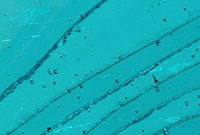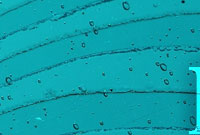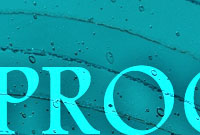 |
 |
 |
 |
 |
 |
 |
 |
|
|
|
|
|
|
|
|
| The stained glass of today originated in Western Europe during the tenth and eleventh centuries A.D. Itís manufacture resulted from combining a number of existing art forms and techniques such as mosaic (the joining of pieces of colored glass), and glass enamel painting (first developed by metal fabricators.)
From its earliest inception it was an art form closely associated with the Christian Church. Church officials looked to artists to design windows that would teach and inspire through the depiction of the scriptures, since the population was largely illiterate. Master glaziers produced stained glass pieces that many feel have never been surpassed. As the Churchís power declined and society became more secular the use of stained glass spread to other buildings. Today stained glass is a widely used medium, which can be found not only in churches, but in community and commercial buildings, and private homes. The basic process of construction has not changed over the centuries. It is a medium much like photography, where the artist is essentially painting with light. Consideration must be given to the direction and amount of light the window will be exposed to in its final location. After the artist produces a scaled down colour rendering of the window, fabrication can begin. The window must to be drawn full size on paper. This pattern is called a cartoon. The lead lines are now drawn in and the colours are carefully selected from the colour rendering. Each piece of glass must be precisely cut so that it corresponds to this pattern. There are several techniques that can be used to enhance the design. These include: acid etching, sandblasting, painting, and staining. Special techniques serve to free the artist from the constrictions of the lead lines, and allow the medium to be treated more like a painting. Once all the glass has been cut and the art piece is complete, the window is carefully leaded together and each joint is soldered. The window is then cemented with a compound that tightens the glass inside the lead making it both secure and water tight. Once cleaned, it is ready for installation. When the window is placed in its final location the ever changing spectrum of light effects can be seen as the various aspects of daylight create change as they move through the glass. Every window or art piece I produce is one of a kind. The design is specific to the project, and is not reproduced. I look forward to working with you on your special project. |
| Home | About | Process | Gallery | Contact | Links | Sitemap | Credits | Creative By 2 Mind Design |